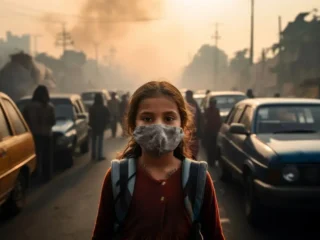Once lockdown is lifted, India is most likely to see a second wave of COVID-19 cases, most probably in late July or August.
According to scientists, during the monsoon India will see the surge in cases.
The timing of the peak will depend on how India is able to control physical distancing and on the level of infection spreads after restrictions are relaxed, they said.
According to Samit Bhattacharya, associate professor at the Department of Mathematics, Shiv Nadar University, “It looks apparent that the trajectory of daily new cases has reached a plateau and eventually it will take a downward fall, maybe for some weeks or even months”.
“Still, we may get a surge of new cases of the same coronavirus and this will be considered a second wave,” Bhattacharya explained.
Rajesh Sundaresan, professor at Bengaluru’s Indian Institute of Science (IISc), agreed.
“Once we return to normal activity levels, there is a chance that infection may begin to rise again. China is seeing this to some extent post easing of some restrictions on travel,” Sundaresan, corresponding author of a working paper by researchers at IISc and the Tata Institute of Fundamental Research (TIFR) in Mumbai, told .
What is the second wave of Covid-19?
According to scientists, the trajectory of Covid-19 cases in India may have plateaued and could even fall for some weeks after the lockdown is lifted. The timing of the peak will depend on India’s ability to sustain social distancing and the extent to which the infection spreads once the restrictions are relaxed.
One of the most common features in many of the pandemics that we have had in the recent past is influenza-like symptoms in which the viral infection attacks the respiratory system.
Now the novel variant of a flu virus that has acquired pandemic proportions wreaks a great deal of havoc before retreating temporarily due to factors like changing weather conditions or an extraordinary curb on movement induced by lockdowns that aim to contain the spread of the virus.
However, once there is another change in the weather or the lockdown is lifted fully or in phases, it can start spreading around the world again.
Some researchers believe the second wave of the 1918 outbreak was brought about by a mutation that once again made the virus unrecognizable to most people’s immune systems. Another important variable is the movement of the virus to populations that haven’t been exposed before and don’t have immunity.







